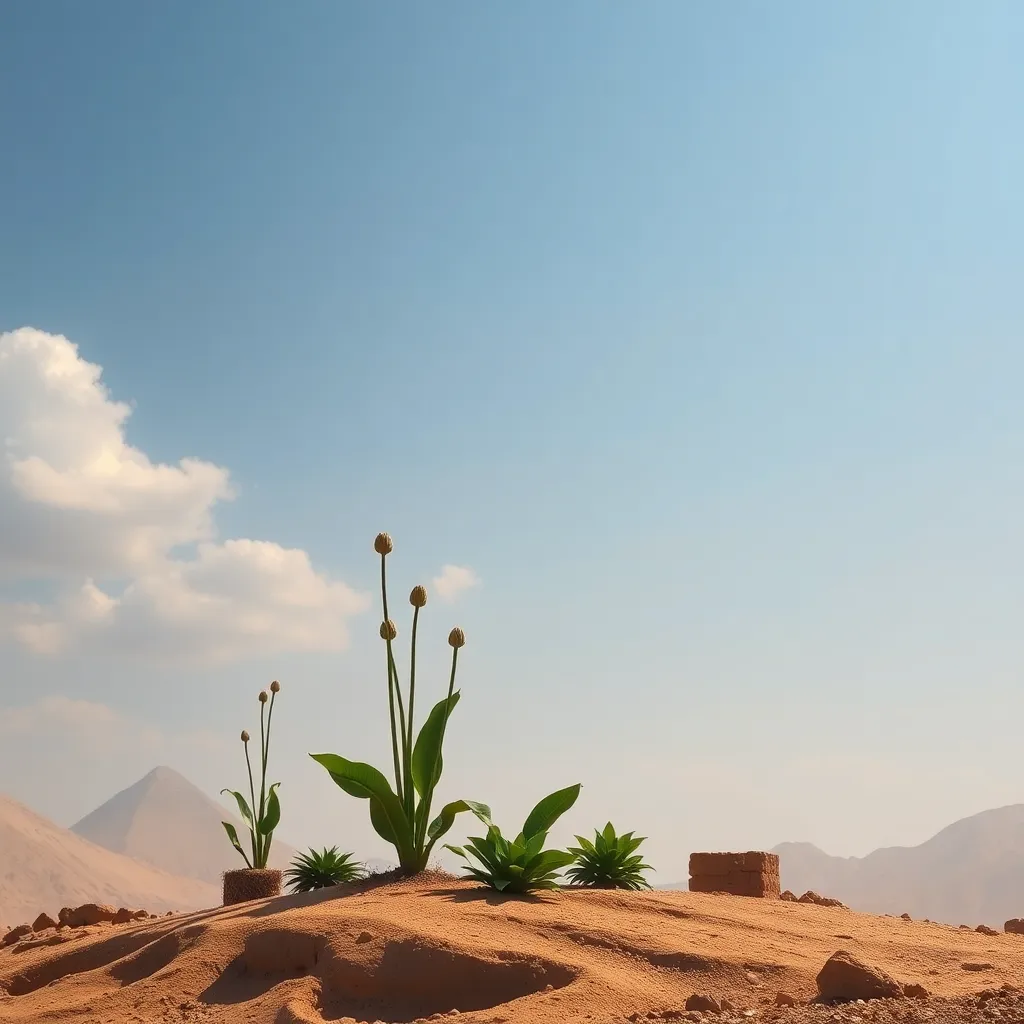The Connection Between Sacred Plants and Egyptian Ceremonies
I. Introduction
Throughout history, various cultures have revered sacred plants as integral components of their spiritual practices. In ancient Egypt, the connection between nature and the divine was profoundly manifested through the use of sacred plants in ceremonies and rituals. These plants were not merely physical entities; they were imbued with spiritual significance and served as conduits to the divine.
Egyptian ceremonies played a pivotal role in the spiritual life of the civilization, providing a medium for the ancient Egyptians to connect with their gods and to navigate the complexities of life and death. This article explores the integral role of sacred plants in Egyptian rituals and their symbolism, shedding light on how these natural elements shaped the spiritual landscape of ancient Egypt.
II. Historical Context of Sacred Plants in Ancient Egypt
The ancient Egyptians held a rich tapestry of beliefs and practices that revolved around their understanding of the world and the divine. Nature, particularly plants, was central to their worldview. The lush environment along the Nile River provided not only sustenance but also a spiritual connection to the gods.
In ancient Egyptian society, several notable sacred plants were revered for their symbolic meanings and uses in rituals. Understanding these plants requires a closer examination of their significance in the cultural and spiritual life of the Egyptians.
III. Key Sacred Plants in Egyptian Ceremonies
A. Lotus (Nymphaea caerulea)
The lotus flower is perhaps the most iconic sacred plant in ancient Egypt. It symbolizes rebirth and creation, representing the sun rising from the waters each day.
- Symbolism of rebirth and creation: The lotus was associated with the sun god Ra and the concept of resurrection.
- Use in rituals and art: It was commonly depicted in art and used in various rituals, including those related to birth and renewal.
B. Papyrus (Cyperus papyrus)
Papyrus played a crucial role in both daily life and spiritual practices in ancient Egypt. This plant was not only a source of material for writing but also had deep spiritual connotations.
- Importance in daily life and ceremonies: Papyrus was essential for creating scrolls, which recorded religious texts and rituals.
- Representation of the Nile and life: It symbolized the fertility of the Nile and the sustenance it provided to the Egyptian people.
C. Mandrake (Mandragora officinarum)
The mandrake has long been associated with fertility and protection, making it a significant plant in various rituals.
- Association with fertility and protection: The root was believed to possess potent powers, often used in love spells and fertility rituals.
- Usage in healing rituals: Mandrake was also employed in medicinal practices, highlighting the duality of its sacred and practical uses.
IV. Rituals and Ceremonies Involving Sacred Plants
Ancient Egyptian ceremonies were diverse and rich with symbolism, often incorporating sacred plants to enhance the spiritual experience.
Common ceremonies included:
- Festivals honoring deities, such as the Opet Festival
- Funerary rites aimed at ensuring a safe passage to the afterlife
Specific rituals that incorporated sacred plants included:
- Offering lotus flowers to the gods during worship
- Using papyrus in the preparation of sacred texts and scrolls
The role of plants in funerary practices was particularly significant. The lotus, for instance, was often placed in tombs to symbolize the deceased’s rebirth in the afterlife.
V. Symbolism and Spiritual Significance of Sacred Plants
Sacred plants in ancient Egypt were attributed with various metaphysical properties. They were seen as intermediaries between humans and the divine, facilitating communication and connection.
In many ceremonies, specific plants were used for their symbolic meanings:
- The lotus represented the soul’s journey and awakening.
- Papyrus symbolized the eternal cycle of life and death.
Case studies of specific ceremonies reveal how the use of these plants enhanced the spiritual experience, providing deeper layers of meaning to the rituals performed.
VI. The Influence of Sacred Plants on Egyptian Art and Iconography
Sacred plants were prominently depicted in ancient Egyptian art, reflecting their significance in the culture.
In art, the lotus and papyrus were often shown in:
- Wall paintings within tombs and temples
- Statues and reliefs representing gods and pharaohs
Moreover, these plants influenced architecture and temple design, with columns shaped like papyrus stalks and lotus blossoms adorning sacred spaces.
In hieroglyphics, sacred plants were used symbolically, representing various concepts and deities, further embedding their significance in the spiritual fabric of ancient Egypt.
VII. Modern Interpretations and Relevance
The legacy of sacred plants continues to resonate in contemporary Egyptian culture. Many modern spiritual practices draw inspiration from ancient traditions, incorporating the symbolism and uses of these plants.
Additionally, sacred plants play a role in:
- Herbal medicine, as practitioners seek to revive ancient knowledge.
- Sustainability efforts, emphasizing the importance of nature in spiritual practices.
VIII. Conclusion
In conclusion, sacred plants held immense importance in Egyptian ceremonies, serving as symbols of rebirth, life, and the connection between the earthly and the divine. The practices surrounding these plants not only enriched the spiritual lives of the ancient Egyptians but also laid a foundation for modern spiritualities.
As we reflect on the lasting impact of these practices, it is essential to explore and honor the connection between nature and spirituality in our contemporary societies, recognizing that the wisdom of the ancients can guide us in our modern lives.




